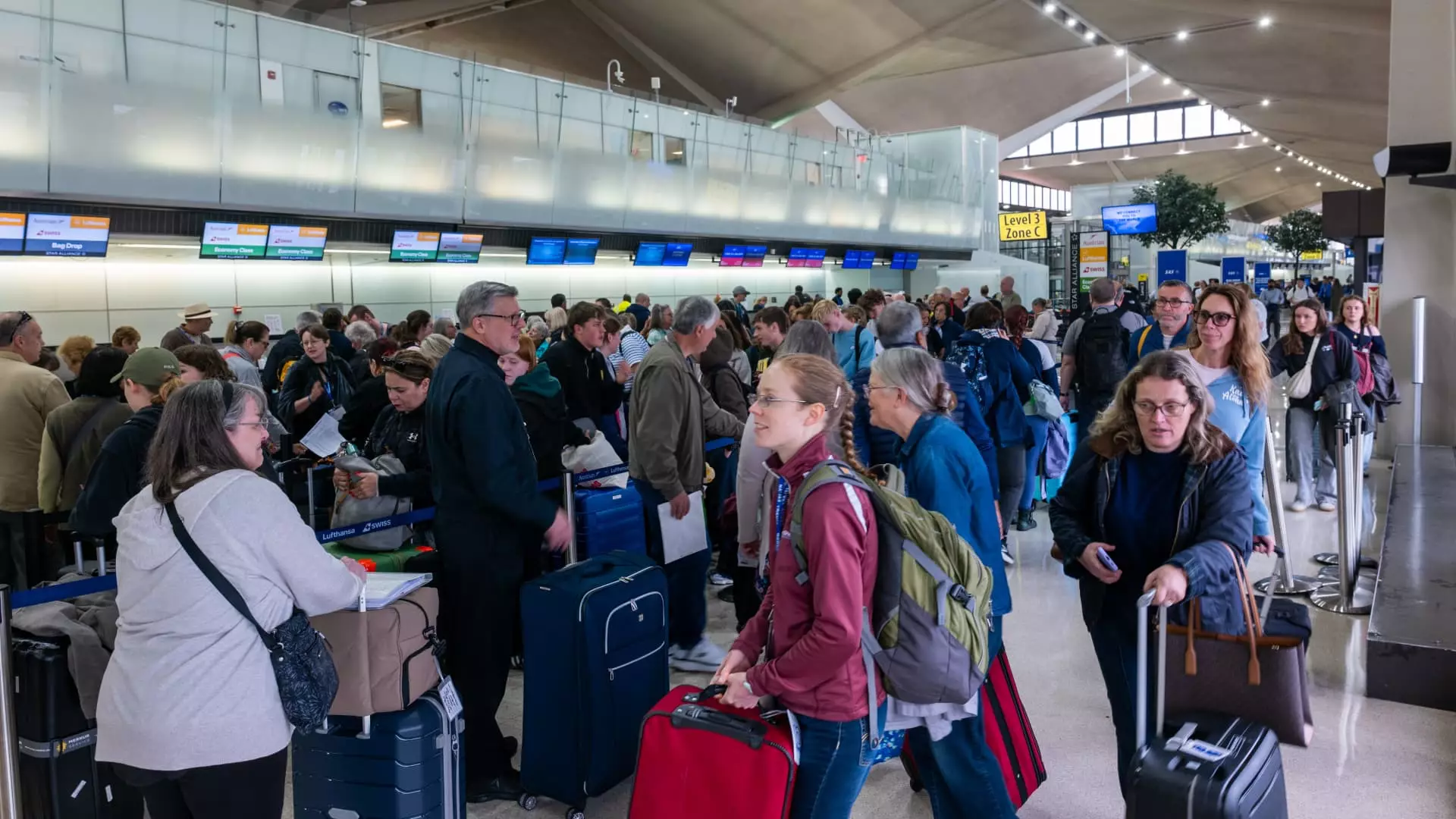When the wheels of an airplane prepare to meet the tarmac at Newark Liberty International Airport, it’s not just a moment of arrival; it’s a testament to our aviation system’s resilience or, more accurately, its fragility. Recent turmoil due to a failure of air traffic control communications serves as a critical wake-up call. With over 1,500 flights impacted and controllers suffering the repercussions of stress-induced absences, it is high time we scrutinize the true state of America’s aging aviation infrastructure and the troubling staffing shortages that plague it.
The Facade of Safety: Are We Living in a Delusion?
Air travel is often seen as one of the safest modes of transportation, an assumption rooted in decades of rigorous standards and regulations. However, incidents like those from last week beg the question: How safe is our aviation system really? The temporary loss of radar and communication at Newark not only delayed flights but raised alarms about the very operational backbone that underpins air travel. When controllers “lost radar and communications,” it reflects not just an isolated technical glitch, but a deeply concerning systemic vulnerability. Framed within the context of an antiquated control system, one must wonder if we are courting disaster by continuing to rely on obsolete technology.
The Federal Aviation Administration (FAA) has claimed that these technical issues are being addressed, yet a mere 90 seconds of lost contact has cascading effects that delay air travel and sow seeds of chaos within an overwhelmed system. It’s almost an insult to our collective intelligence to maintain that the system has remained competent while witnessing such widespread disruptions.
Staffing Shortages: The Invisible Crisis
The narrative surrounding the labor force within the FAA is equally alarming. Reports suggest that over 20% of controllers at Newark took time off work due to the stress of these disruptions. Many of these individuals face the paradox of working within a sector that is deemed critical, yet is underfunded, underappreciated, and chronically understaffed.
Beyond the surface, these staffing shortages represent a declining investment in human capital essential for maintaining a secure and efficient aviation system. The fact that staffing issues persist, despite the urgency expressed by industry leaders and government officials alike, points to a systemic failure—not only of the FAA but of broader governmental commitment to aviation safety. When air traffic controllers are being pushed to their limits, we must ask ourselves: how do we expect them to manage the unprecedented volume of air traffic safely and effectively?
The Illusion of Progress: Empty Promises and Fleeting Solutions
The recent statement from the Port Authority of New York and New Jersey was clear: billions have been invested in physical infrastructure, yet without a well-staffed and modern federal air traffic system, those investments are futile. The FAA has moved controllers from Long Island to Philadelphia, seeking relief from the pressures of one of the world’s busiest air corridors, but these temporary patches do not address the root of the problem.
Just this week, U.S. Transportation Secretary Sean Duffy promised a “brand new air traffic control system.” How many times must we hear similar promises before significant action is taken? History shows that infrastructure improvements in the FAA often come accompanied by delays and bureaucratic red tape. We need robust solutions that translate into real-time enhancements, rather than vague assurances that are quickly forgotten as the next crisis arises.
Political Will: A Haunting Absence
In times of crisis, we often look towards our leaders for decisive action and clarity. However, the response from those at the helm has been lackluster at best. Governor Phil Murphy of New Jersey expressed disappointment over past investments and has implored Duffy to prioritize the region, especially given the impending influx of passengers for the World Cup Finals. If our politicians cannot recognize the urgency of reforming an unreliable aviation system, what hope do we have in overcoming systemic issues that threaten to hamper public confidence in air travel?
As our airspaces become increasingly congested, the gap between problem and resolution widens, casting shadows of doubt on our leaders’ ability to advocate for critical improvements. It is beyond time for those in power to move from platitudes and half-measures to genuine accountability and inspired action, ensuring that they not only talk about safety but actually embody it.
In a world that increasingly values efficiency and enhanced connectivity, it is unacceptable to preserve a system that feels as antiquated as it does precarious. Every flight is a gamble, and the fortunes of thousands ride on the hope that we can finally modernize and secure our air traffic control systems. Choices made today will determine the stability of our aviation future, and if we wait any longer, we may just take a nosedive into a crisis that could have been averted.

